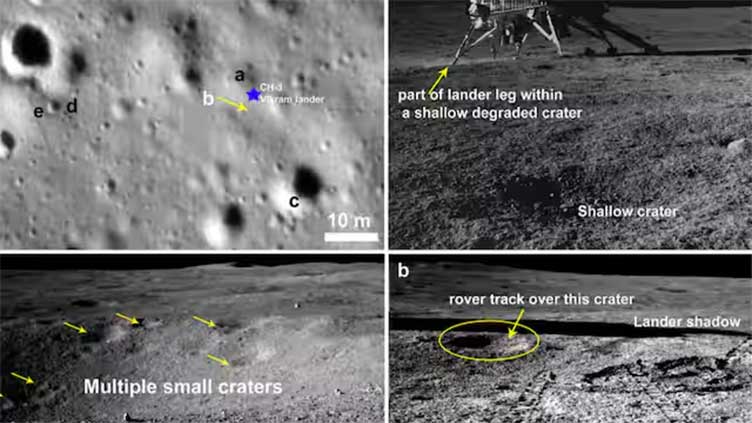Chandrayaan-3 discovers new crater on Moon's south pole

Technology
This piece of lunar land can be crucial for studying the early geological evolution of the moon
(Web Desk) - India’s Chandrayaan-3 continues its voyage and now it has discovered a 160-km-wide moon crater near its landing site.
The latest findings were unravelled by the Pragyan rover, as published in the latest issue of Science Direct by scientists from Ahmedabad’s Physics Research Laboratory.
The new crater has been discovered from data sent back to Earth by the Pragyan rover, which is currently exploring the moon’s surface at the lunar South Pole.
The Pragyan rover traversed a highland terrain around 350 km from the Aitken basin in the South Pole, the largest and oldest impact basin on the lunar surface.
This piece of lunar land can be crucial for studying the early geological evolution of the moon.
The crater site is rich in material accumulated from past impacts and has been an area of interest for several previous lunar exploration missions.
The Aitken basin, in particular, contributed almost 1400 metres of debris, while other smaller craters around the basin added more geological material to the landscape.
Scientists believe the new 160-km-wide crater was formed even before the formation of the Aitken basin. This means the new discovery by India’s moon mission is that of one of the oldest geological structures on the lunar surface.
Due to its age, the crater has been buried under debris generated due to later impacts and has degraded over time, said the report.
The Pragyan rover has taken high-resolution images from its optical cameras, revealing key details about the structure of this ancient crater.
Scientists believe this will also reveal vital cues on the Moon's geological history. This presents a rare scientific opportunity to study one of the earliest geological formations on the celestial body.
The Chandrayaan-3 mission’s ongoing analysis of the lunar surface, including the crater, has rejoiced scientists across the world.
The hidden facts from the cratered region could reshape our understanding of the Moon’s early history and the formation of its unique terrain.


